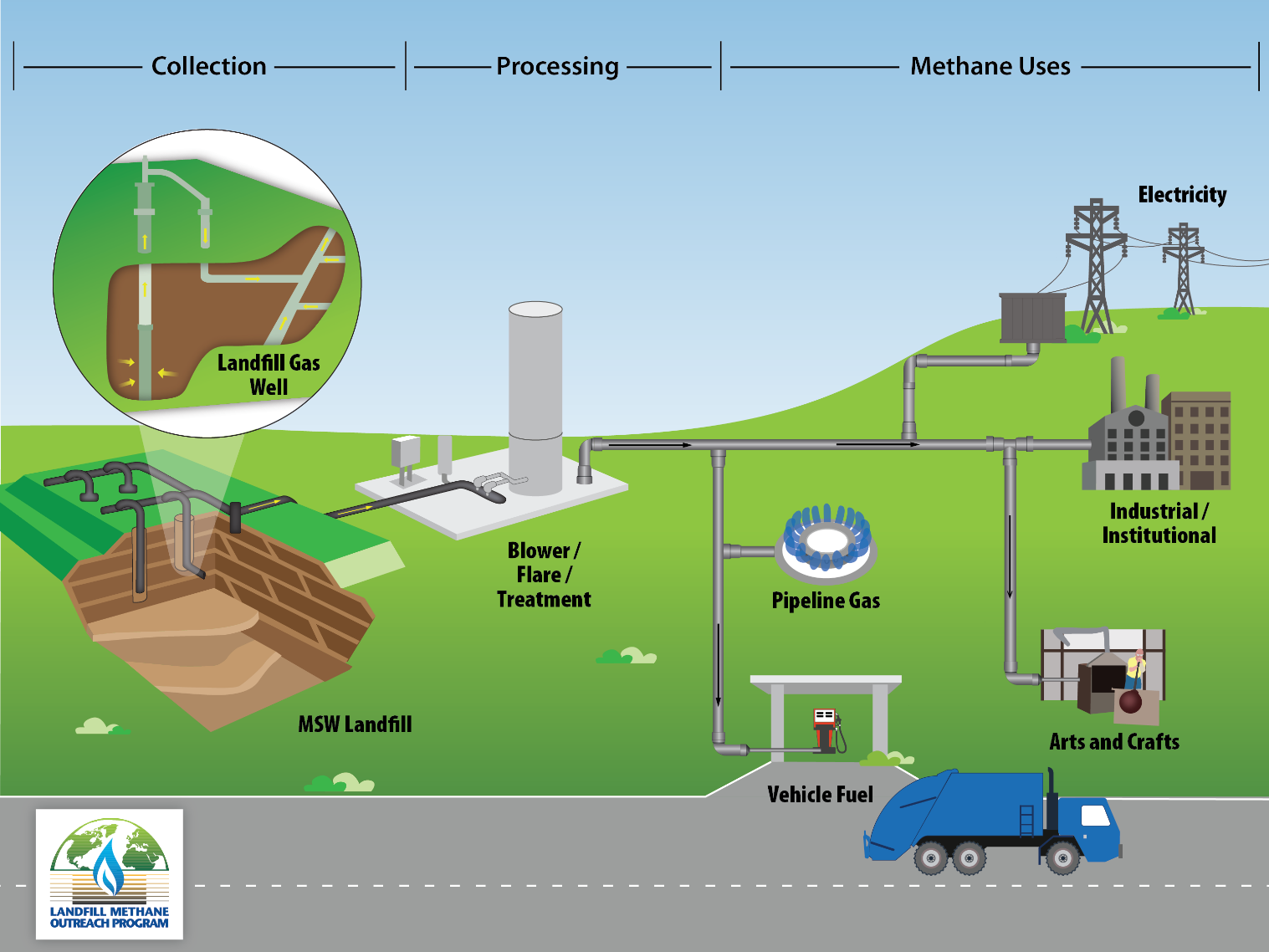Project Sponsor: Environmental Research and Education Foundation
Project Cost: $250,000
Investigators: Appala Raju Badireddy 1, Stephen Zemba2, Wesley Fritz 3, and Florentino De la Cruz4
Institution: 1. Univ. of Vermont; 2. Sanborn Head & Associates; 3. Weston Solutions; 4. NC State University
Research Overview and Objectives
PFAS are presenting significant challenges to the solid waste industry, as facilities are the de facto collection point of PFAS that are widely used in commerce and ubiquitous in waste streams. Information on PFAS emissions to air is limited, but public concerns and regulatory demands will likely grow as the focus on PFAS expands beyond drinking water. U.S. EPA-funded research will characterize PFAS in landfill gas (LFG), enabling the estimation of fugitive emissions, but most LFG is collected and treated through combustion. Measuring emissions and destruction efficiencies from LFG-fueled engines and flares will allow for estimation of total PFAS emissions from landfills. Proactive investigation of impacts from these sources will provide the industry with data to judge the potential significance of PFAS emissions and assist in developing information to
address questions and concerns that will likely arise, and hence support EREF’s mission to promote safe, sustainable waste management practices.
The overall objective is to evaluate the PFAS destruction in landfill gas flares and engines. Research objectives are to:
1. Measure PFAS emissions from combustion sources at landfill facilities and assess
PFAS behavior in combustion systems
2. Examine intra- and inter-facility emissions variability and characteristics
3. Evaluate PFAS destruction efficiencies in LFG combustion sources
4. Evaluate PFAS impacts to ambient air and exposure due to combustion emissions

Research Approach
The study is proposed by a research team experienced in the evaluation, testing, and analysis of PFAS, that centers on measuring facility-based PFAS mass fluxes into and out of LFG combustion equipment and evaluating PFAS fate and destruction. Testing will be conducted at two landfills, to be selected on the basis of industry representativeness and geographic location. Testing will include both LFG-fueled internal
combustion (IC) engines (used for energy recovery) and flares. Study design includes investigation of a wide range of PFAS to examine what compounds might be released from combustion sources and whether precursor conversion occurs. We will analyze for both volatile (modified TO-17) and non/semi-volatile/particulate-bound PFAS (OTM-45). The research will complement a nationwide study of PFAS in LFG underway at North Carolina State University, and allow for assessment of total PFAS emissions from landfills. The study will also include data evaluation and impact analysis, assessing the likely magnitude of PFAS concentrations in ambient air that might result from LFG combustion emissions.
